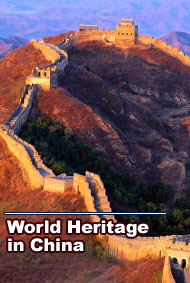
|
|
|
Tibetan Opera
Main Features: Lavish and Flamboyant Traditionally, the theater for Tibetan Opera was an open circular space sheltered by a canopy, with the stage defined by a magical circle and central altar. Over the centuries, the opera has formed a three-part stage process. In the prelude, known as "Wenbadun," Wenba men in blue masks, two Jialu men, and several fairies take the stage to perform religious rituals and songs and dances, and introduce the actors and actresses. Next, a narrator explains the plot, section by section, as the opera is being performed, episode by episode. In the absence of a realistic setting and props, the narrator's words must conjure up the stage effects in the audience's imagination. Two musicians -- a drummer and a cymbalist -- sit on the side of the stage. An idiosyncratic drumbeat, accompanied by a specific dance step, identifies each character. The performance ends with a blessing ritual that features a blessing ceremony and is also an occasion for the audience to present hada and donations. Tibetan Opera costumes are very lavish, with rich brocades and a striking variety of masks and animal motifs. The musical score is created entirely by the drum and cymbals that punctuate every movement, and by the singing actors. The rapidly chanted narration alternates with the sung dialogues repeated in the chorus. The dance movements are refined, exaggerated, and vigorous. The highlight of Tibetan Opera is the mask. Located on the front of the mask is usually a motif, such as the sun or moon. The actor's role can be identified from the type of mask he or she is wearing. For example, a red mask represents the king; a green, the queen; a yellow, Lamas and deities, and so on. Tibetan Opera call for skills in singing, dancing, elocution and the martial arts. Historical pageantry, myth, and magic are woven together with earthly humor and scenes from the daily lives of ordinary people. The primitive simplicity and vigor demonstrated in the singing and dancing is effectively reflected in the typical Tibetan landscape backdrops. Today, changes have taken place in the structure, singing, dancing, masks, and stage format of Tibetan Opera; an orchestra, backdrop, lighting, and make-up have also been added. Tibetan opera is now also performed both in the open air and indoors. Tibetan Opera reflects the Tibetan people's lives from various periods. The original scripts from which the opera was adapted have remained popular readings among Tibetans for centuries. Currently there are about 20 traditional repertoires (although some of the scripts have been lost and only the names and some of the plots remain). The famous Eight Great Classical Tibetan Operas include Prince Nor-bzang, Maiden Vgro-ba-bzang-mo, Brothers Don-yod and Don-grub, Prince Dri-med-Kun-idan, Princess Wencheng, Gzugs-kyi-nyi-ma, Pad-ma-vod-vba, and Maiden Shang-sa -- most of which were derived from historic events, famous lives, folk tales, and stories from the sutras. Rebirth and Significance Throughout the ages Tibetan Opera has played a central role in the life of the Tibetan people. It features prominently in a number of Tibetan festivals andtemplefairs, some of which are specifically designed for it, such as the Shoton Festival (also known as Yoghurt Festival). By the 19th century most districts in Tibet had their own opera troupes. The opera spread from Shannan, Xigaze, andLhasato other parts of Tibet, and further into Southwest China's Sichuan andYunnan provinces, Northwest China's Qinghai andGansu provinces, and the neighboring countries of India, Bhutan, and Nepal. However, Tibetan Opera, boasting the longest history among the few other folk operas of Chinese ethnic minorities, was once on the verge of fading away in the 20th century like many other traditional folk arts. |